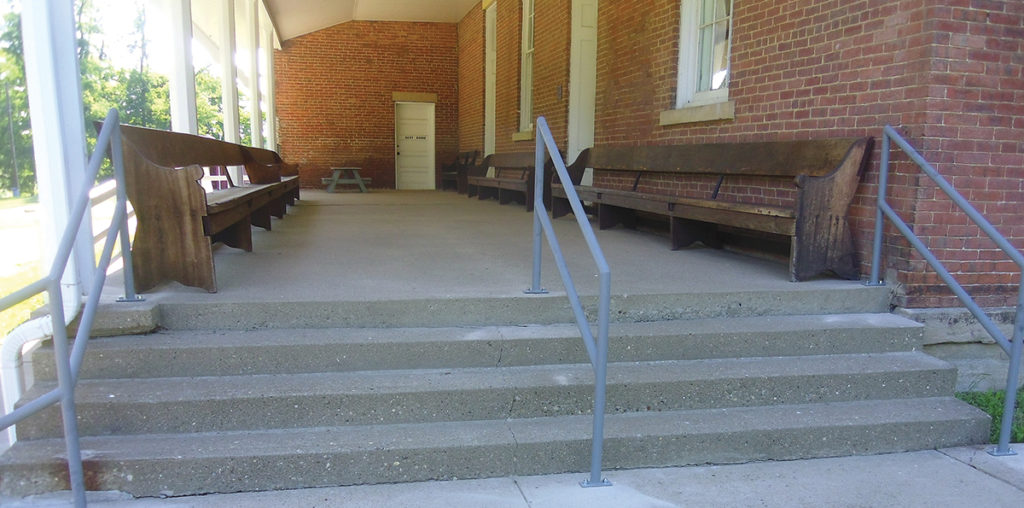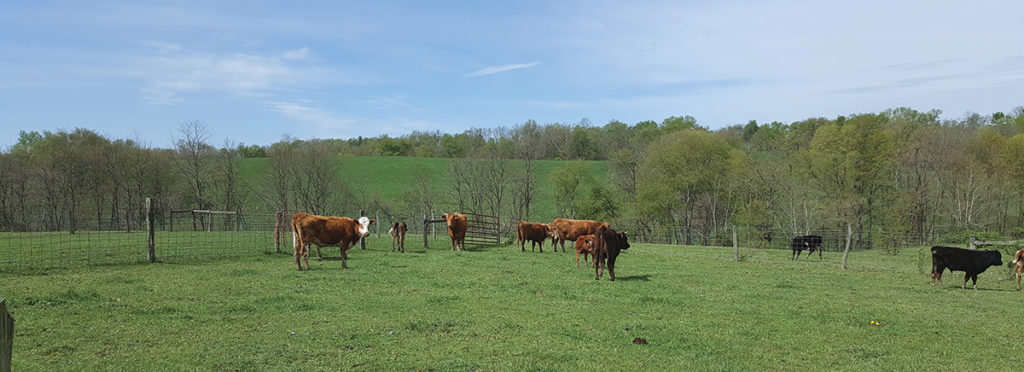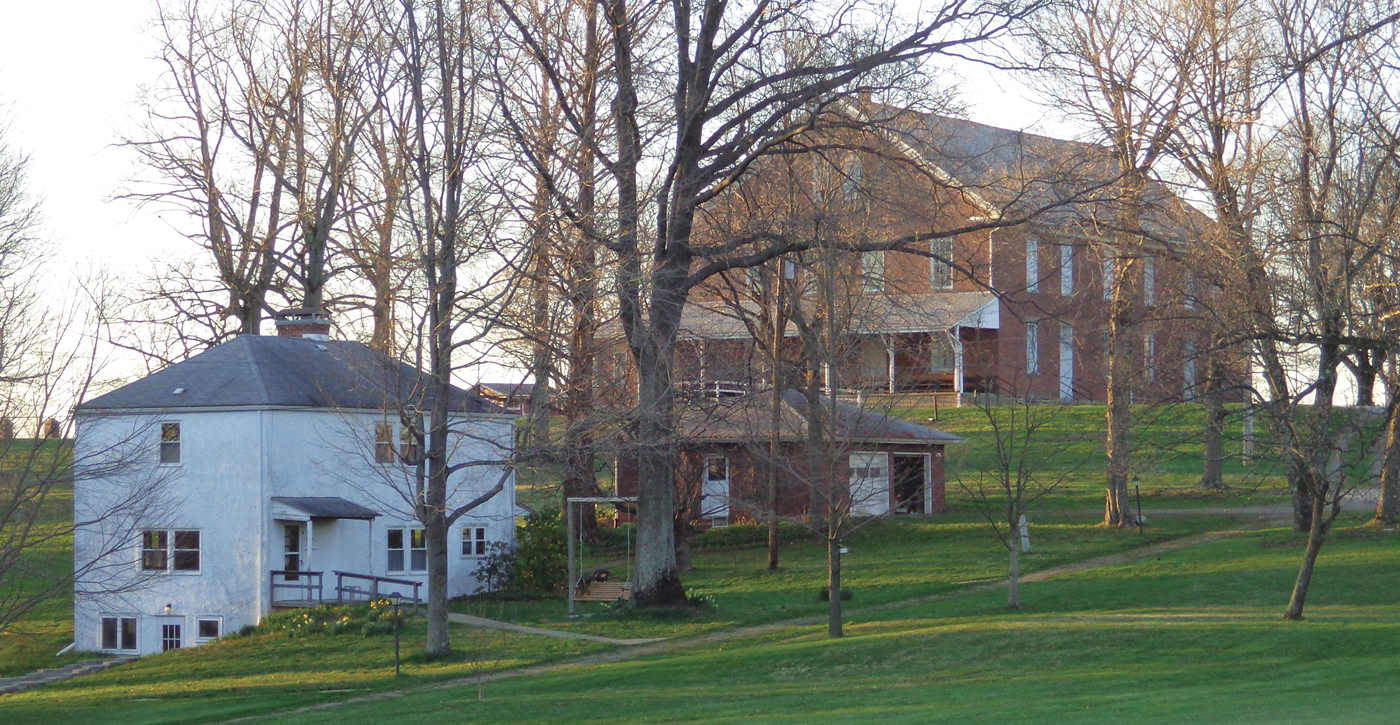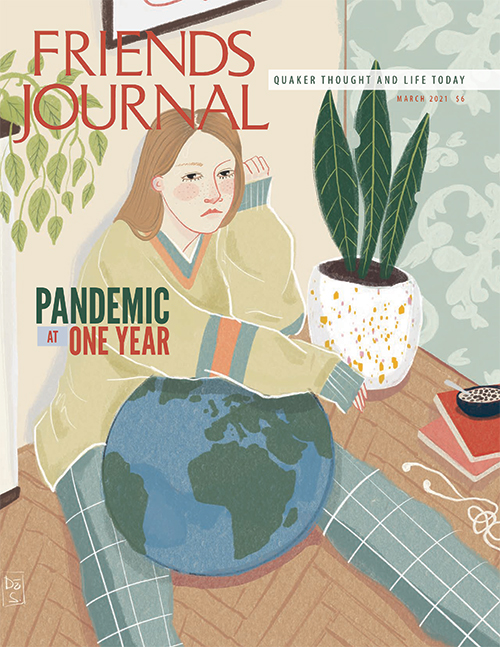Sitting on that cold, wooden bench outside the meetinghouse last March in the presence of no one other than the memory of the many Friends who came before me, knowing that this was not the first time that Friends had been denied access to their places of worship, I felt a wave of gratitude for being in a faith tradition that teaches that anyone can come near to God anytime, anywhere. I chose that spot that morning just in case someone showed up who needed company and did not know the meetinghouse was closed.
A Friend from Walton Retirement Home came by with her little dog and sat with me for a bit. Then another arrived to water plants at the activity center and stayed the whole hour. As the weather got warmer and word got out, we eventually had close to a dozen worshipers on that porch, carefully spaced out, mostly wearing masks. No one got sick. Shawna brought a basket of homemade masks, which helped me overcome my reluctance at the time to wear one. It wasn’t long until it felt just like fastening my seat belt before driving in the car—a minor inconvenience, well worth it for the comfort of knowing I was doing what I could to stay safe, to keep my loved ones safe.

Photo by Robert Rockwell
From that meetinghouse porch, facing south, one can view much of the campus of Olney Friends School, including its beautiful 350-acre certified organic farm. To the east goats and cows are grazing, they and the birds overhead happily oblivious to the oncoming global pandemic. Off to the west beyond the Barnesville Middle and High Schools, Doudna’s orchard trees are beginning to bud.
Not a bad spot to quarantine, I thought, shivering at the thought of the poor people in New York City trapped in tiny apartments, the usually busy streets eerily quiet around them. Olney was built, after all, as a hedge against a dangerous world; in the early 1800s its founders were seeking refuge for their children from a world of greed and corruption. Today we huddle against a virus that might kill if we breathe it on one another.
The students were gone for spring break by then, and many stayed gone until fall, but as our little boarding school is the “in country” home for our international students, they all had to return to shelter in place on campus. We developed protocols for keeping everyone safe that allowed us to reopen in September, even as we learned that we could hold classes online and come together for worship via the Internet.
Those first few months were hard as we learned how to keep learning and developed some semblance of community with online classes and worship. At times I felt sorry for myself, as much of what I do involves reaching out to others, and now those others were mostly far away and more concerned with survival than learning about Quakerism. I worried that I wouldn’t even be able to help when my own faith was challenged by the carelessness I saw in people who refused to wear masks, and when I felt my own fear of getting sick or passing it on to others.
Olney was built, after all, as a hedge against a dangerous world; in the early 1800s its founders were seeking refuge for their children from a world of greed and corruption. Today we huddle against a virus that might kill if we breathe it on one another.
I sat on that porch looking at silver-lined clouds trying to comfort myself with trite sayings like, “Every cloud has a silver lining,” and,“This too shall pass,” and knowing that “Sunshine always comes after the rain.” And I started thinking about Lent. Unusual, perhaps, for a Quaker, but ever since my choirboy days singing “Kyrie Eleison” and “Miserere Nobis,” with no idea what the words meant, I have been fascinated by Catholic liturgy. My curiosity about Lent had led me to Wikipedia, where I read that “[t]he purpose of Lent is the preparation of the believer for Easter through prayer, doing penance, mortifying the flesh, repentance of sins, almsgiving, and self-denial,” with Easter, of course, being the resurrection of Jesus Christ.
Maybe this is what it’s all about, I thought: what this pandemic is about, what Lent is about. No one likes self-denial, especially not people in the United States, but what if all this suffering, this lockdown, this self-denial, is causing us to re-evaluate our priorities, to reach for something more in life than the satisfaction of our worldly needs, to discover anew the real meaning of life? The next thing I know, the country is exploding with anger and frustration about why Black Lives (still don’t seem to) Matter to many of us, and I hope . . . maybe it’s working . . . maybe it’s not really “life” to hunger for more when others have so much less, to complain about being locked out of church when others can’t even safely walk down the street.
And maybe those early Friends were right: Easter is not about waiting for Christ to return someday while we ignore the pain all around and within us. Maybe Christ is come to teach us to truly love one another, as we are truly loved, and maybe we were just too busy to notice, or care.

Photo by Karyn Riccelli
Now, as I write these words, it is the liturgical season of Advent, a time of expectant waiting and preparation for the birth of Christ. Ah, I’ve heard those words before: “expectant waiting.” That’s what Quakers say we are doing every First Day; at every meal; every time we pause in a busy, fearful, frustrated, lonely, or angry moment to wait expectantly—not like waiting for a bus, but waiting like an attentive server in a busy restaurant, anticipating the needs of those around us, ready to help whenever and however we can . . . and this is Life Eternal.
Perhaps, as you read these words, you are in between Advent and Lent, or between Lent and Advent, perhaps expectantly waiting for something or someone to be born in a manger or come on a cloud to save us. Or perhaps, wherever two or three of us are gathered together, the one in need and the one who serves are present in our midst.




Thank you David. As a former Catholic, I know a lot about Lent. For me it has always been a time to give up something and a time for renewal. I am trying this year to give up my stubborness, and to see the good in others, even when I disagree with them. Last year we had opportunities to be on campus and to be a part of Collections during different events, or just if we happened to be there in the morning. I miss those times of quiet reflection.
When two or three are gathered together the purpose is to love the Lord our God with all our heart, with all our soul, and with all our mind. Helping others will come naturally, like water flowing to the sea after we have connected together in the Presence. Easter is indeed, the time of Resurrection, Hope, Renewal and Life. I was at a Quaker meeting for worship last Easter where almost the entire meeting was dedicated to Despair about the environmental deterioration. No mention of Easter, or Christ or the Resurrection. This is materialism, as is all our social action based on our will. Seek ye first the Kingdom of God, and the rest will be added.
I think the two go together. The roadblock for some may be that the seeking never includes others. It may not be a sequential first and second. Perhaps the two go together and that helping others is a part of seeking.
A *second* commandment is like the first, great commandment: “you shall love your neighbor as yourself.”
A very fine article, David. Thanks for sharing with all of us…especially those of us who have walked those fields and halls.